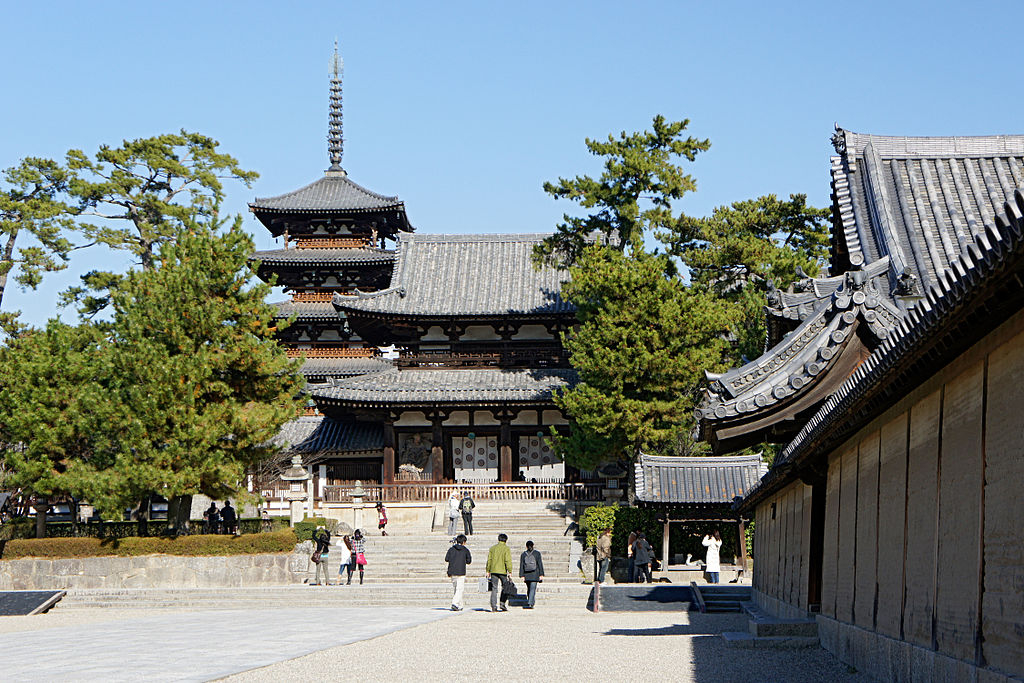Traditional Japan¶
Arts¶
You’re in Japan, and you figure that while you’re here you want to do something Japanese, not just hang around with other gaijin all the time (it may feel nice and secure, but think about what you’re here for). Getting into any of the things mentioned below will not only give some substance to what you’ve read about Japan, it’ll also put you in touch with Nihonjin outside of your work situation, and this will do a lot for your mental health while you’re here
Sado (tea ceremony)¶
Elegant, precise and very traditional. Kimonoed ladies whip up Japanese green tea and serve it with Japanese confectionery. You can see it at various communities (e.g. Gojo), try it at tea shops (Yoshino-yama has dozens) , or learn the art yourself. Check with your school teachers for suggested sado instructors.
Ikebana (flower arranging)¶
Another precise and delicate Japanese art. Again, if you’re interested, your teachers will almost certainly be able to help.
Shodo¶
The art of Japanese calligraphy. Once again, local community/amenity centers often provide lessons or small exhibitions. Most schools have a calligraphy club.
Rice-planting¶
Around May, you can sink knee deep in slimy mud to plant rice. Ask someone in a country town; The AET in Haibara may be able to help.
Washi-making¶
Washi is traditional Japanese paper. You can watch it being made in Yoshino-gun by an acknowledged master. For reservations, call (07463) 6-6532. They don’t speak English. It’s 30 min. by bus from Kintetsu Yamatokamiichi station. Get on a bus bound for Otaki via Kuzu, and get off at Kubogaito.
Matsuri (festivals)¶
Festivals are a blast! It’s like being at a carnival back home, wherever you came from. This is a good chance to see the Japanese as families, acting relaxed. You can get lots of festival food, tons of toys and trinkets, and see some really funky traditions being acted out.
Museums¶
There are lots of interesting museums here in the Kansai area. Kansai Time Out has an excellent list of area museums and their current showings.
Izakaya¶
These Japanese style bars are recognizable by their red lanterns. They sell, beer, sake, and Japanese snacks. Mike in Shakudo can tell you all you need to know (see related article on Internationalization).
Traditional Japanese Music, Dance, and Theatre¶
Dance and music in Japan date from ancient times, and are still performed as part of sacred rituals at many shrines and temples. In Shinto legend, it was a dance that drew the Sun Goddess Amaterasu out of hiding, and this dance was the first kagura (dance of the gods). Another native dance/theater form was Dengaku, a fertility ritual (often graphic!) performed around planting time. Beginning in the 7th century, many forms of dance entered Japan from the mainland. Gigaku was perhaps the first, and its primary form was the lion dance (shishi-mai). Gagaku (imported music) and Bugaku (imported dance) were adopted as the preferred entertainment of the Japanese court. In Gigaku and Bigaku performers often wear masks and elaborate costumes. The modern versions are very slow, but apparently the ancient music was faster and more, well, dancable.
Noh drama started as a popular entertainment, although it was adopted by the upper classes and now survives in mostly a ‘refined’ from. Between Noh performances, which tend to be slow and heavy, there are comic sketches called Kyogen (which are now sometimes performed alone). These are usually performed in more modern Japanese and are more lively.
Kabuki was originally part theater, part circus, and was performed by both men and women. The government banned women from the stage in 1629, however, and now all roles are played by men. The costumes are incredible, the pace a bit slow.
Bunraku is a puppet theater that is native to Osaka (but descended from Kabuki). The dolls are brilliant , and the puppeteers, who are dressed all in black but still fully visible, are true artists. It takes 7 years just to learn how to move the feet of a puppet realistically.
Finally, a word from Odori (“dance”). There are hundreds of Odori: some of the better known in this area are Bon Odori and Kawachi Ondo. Accompanied by drumming, this is folk dance at its best. Follow a grandmother in kimono into the ring and dance the night away!!
The following are some of Nara’s venues featuring traditional dance: JFT denotes “Japan National Folk Culture Treasure” NFT denotes “Nara Prefecture Folk Culture Treasure” LFT denotes “City/Town/Village Folk Culture Treasure”
Kagura, Gigaku, Gagaku, and Bugaku¶
1-3 Kasura Hajime-shimi, 11:00 Kasuga Taisha (Nara) 1-3 Mi-kagura-shiki, 11:00 Yuga Taisha (Nara) 1-14 Kuzuso (prayers for Bugaku), 13:00 Kuzu (Yoshino-cho) NFT, LFT 1-15 Bugaku Hajime-shiki, 13:00 Kasuga Taisha (Nara) 3-13 Kasuga Matsuri, 9:00 Kasuga Shrine (Nara) 5-5 Court Music and Dance, 13:00 Kasuga Taisha (Nara) 8-10 Okina Nai (Nara City, Narazaka) NFT 10-1 Aki Matsuri, 13:00 Matuso Jinja (?Koriyama) 10-11 Shishi-mai (Soni-mura) NFT 10-15 Reisai (all kinds of dancing), Kamihata Jinja (Yamazoe-mura) LFT 11-3 Court Music and Dance, 13:00 Kasuga Taisha (Nara) 12-17 On Matsuri, 13:00
Noh and Kyogen¶
1-25 Sotani Kyogen, 10:00 Ten Jinja (Oto-mura) around 2-3 Otaue-sai, 11:00 Tamukeyama Jinja (Nara) 5-11, 12 Takigi (Torchlit) Noh, 11:00 Kasuga Taisha (Nara) 5-11, 12 Takigi (Torchlit) Noh, 16:00 Kofukuji (Nara) LFT 9-15 Shiba (Lawn) Noh, 17:30 Tobihino Field (Nara) 9-23 Shoten Kagari Noh, Hazanji (Ikoma) 9-23 Shoten Kagari Noh, Hazanji (Ikoma) — Noh, ? Sugaoharu Jinja (Yamazoe-mura) LFT
Odori¶
1-25 Shinohara Odori, 13:00 Ten Jinja (Oto-mura) NFT 4-3 Okage Odori (Yamazoe-mura) NFT 8-15 Sakamoto Odori (Oto-mura) NFT 8-17 Taiko (drum) Odori (Oyagu-cho) — Taiko Odori (Tsuge-mura) NFT — Kuzu Taiko Odori (Yoshino-cho) NFT, LFT — Niu Taiko Odori (shinoichi-cho) LFT — Odori (Nara-shi, Takarachiku) LFT — Totsukawa no Odori (Totsukawa-mura) JFT
